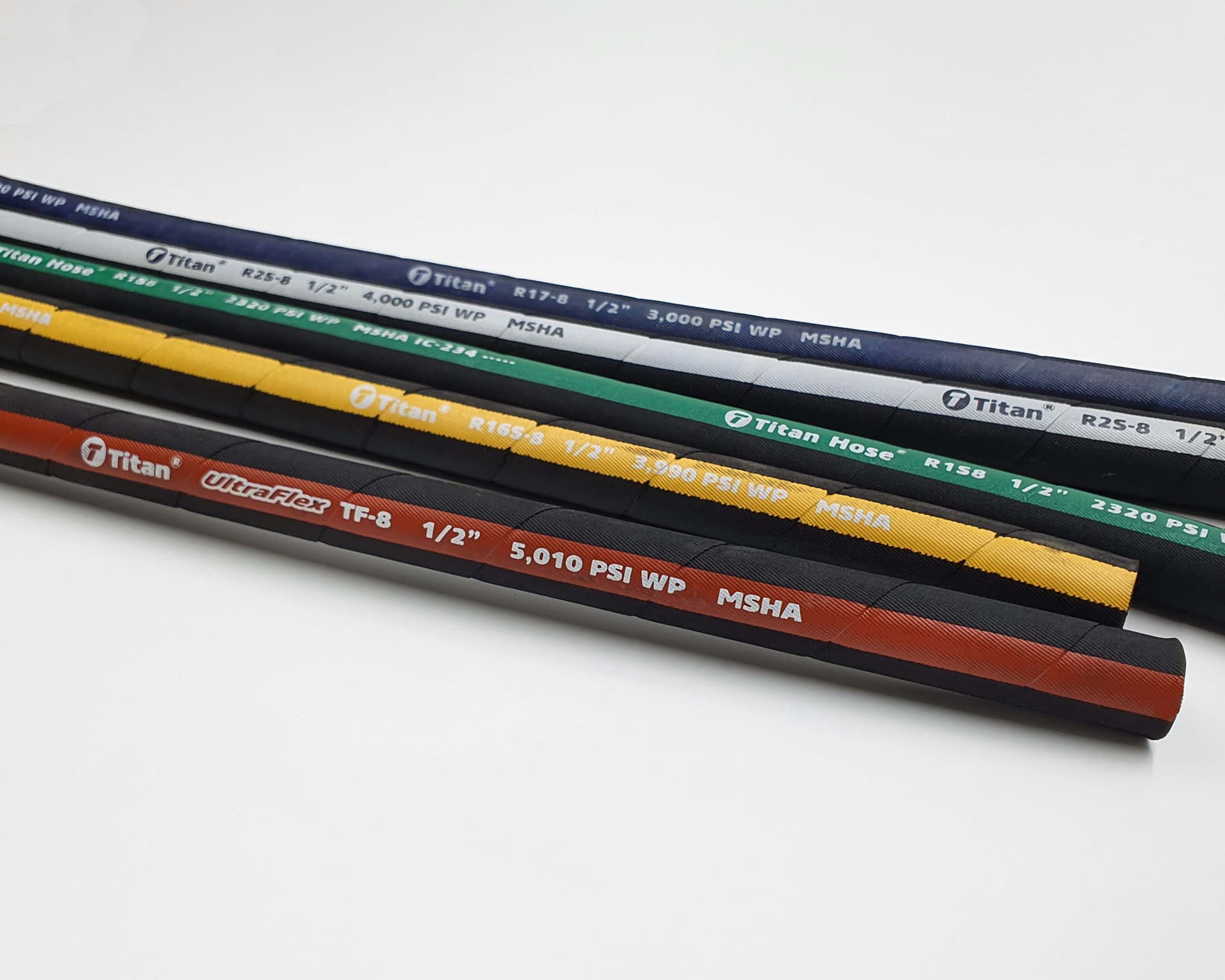What are the differences between types of R Hose?

There are a few different type of R hose, including R1, R2, R3, R12, R13, R15, R16, & R17. While these hoses are generally made of the same types of materials, the ratios of materials changes from hose to hose. Because of these differing ratios, each hose is rated for different pressures and applications. The main differences are as follows:
| Hose Name | Hose Construction | Temperature Range | Pressure Range | Applications/Features |
|
R1 |
1 braid steel wire | -40° to +212° F | 725 - 3,265 PSI | Medium pressure hose, ideal for hydraulic petroleum or water-based lines. |
| R2 | 2 braid steel wire | -40° to +212° F | 1,125 - 5,800 PSI | Higher pressure hose, ideal for hydraulic petroleum or water-based lines. |
| R3 | 2 braid synthetic textile hose | -40° to +212° F | 550 - 1,200 PSI | Low pressure hose, recommended for low pressure hydraulic oil lines. |
| R12 | 4 braid steel wire | -40° to +250° F | 10,160 - 16,240 PSI | Highly flexible, low bend radius. Recommended for petroleum and water based fluids. |
| R13 | 4 or 6 steel wire spiral | -40° to +212° F | 5,000 PSI | Recommended for petroleum and water based fluids. |
| R15 | 4 or 6 steel wire spiral | -40° to +212° F | 6,000 PSI | Recommended for petroleum-based hydraulic fluids. |
| R16 | 2 braid steel wire | -40° to +212° F | 2,390 - 5,800 PSI | Low bend radius. |
| R17 | 1 or 2 braid steel wire | -40° to +212° F | 3,000 PSI | Medium pressure hose. |